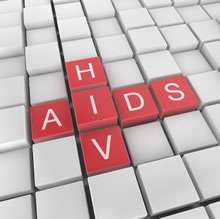HIV cases could be reduced with combined prevention efforts, study says

(Medical Xpress) -- In a study published in the latest edition of The Lancet, researchers from Emory University propose that biomedical interventions, including pre-exposure prophylaxis, combined with behavioural and structural prevention strategies could prevent as many as 25 percent of new HIV infections among men having sex with men (MSM) globally over the next decade.
The research, led by Patrick Sullivan, PhD, DVM, associate professor of epidemiology, Rollins School of Public Health, suggests that by combining different prevention strategies such as condom use, counseling and antiretroviral medication, a large number of HIV infections could be prevented.
"Our prevention efforts have failed to control HIV epidemics among MSM around the world, and we must do more. The results of our modeling indicate that, by using the prevention tools we have today and bringing them to appropriate scale, we could prevent nearly a quarter of all new cases worldwide in this population over the next decade," says Sullivan.
"The most important gains in prevention are likely to come from the smart packaging of coordinated biomedical, behavioral and structural interventions. The intelligent combination of approaches is better than any single approach by itself."
Results of transmission models illustrate the potential impact of such approaches on reducing new HIV infections. For example, a pre-exposure prophylaxis (Pr-EP) based package would include PrEP for high-risk HIV negative individuals, as well as promotion of routine screening for infection, reduction of partners and provision of culturally competent screening and safe spaces for ongoing monitoring for HIV infection and toxic effects.
Pr-EP is a new HIV prevention method in which people who do not have HIV take a daily antiretroviral pill to reduce their risk of becoming infected. The FDA has just approved the drug Truvada for pre-exposure HIV prophylaxis.
Models of three approaches—oral pre-exposure prophylaxis (40 percent coverage), antiretroviral treatment (40 percent coverage), and increased condom usage—estimated that 11 to 29 percent of future HIV infections could be averted during 10 years. The models explored the potential prevention impacts in the United States, Peru, India and Kenya.
The authors conclude: "The next steps in HIV prevention in MSM will be technically difficult and costly. Proof-of-concept studies of combination prevention approaches should be followed by large, multicenter prevention trials of promising packages.
Alteration of the trajectory of new HIV infections in MSM will necessitate a lot of work. New prevention approaches, increasing acknowledgment of HIV challenges in MSM worldwide, and emphasis on research and programs for MSM in low-income and middle-income countries are promising signs. Better prevention strategies and a strong international commitment are needed to bolster this effort."
Sullivan will present his study findings, Tuesday, July 24 during The Lancet symposium at the 2012 International AIDS Conference in Washington D.C.

















